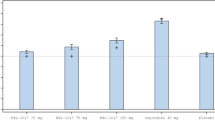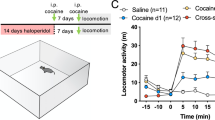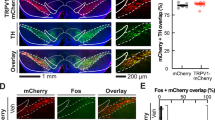Abstract
Electroconvulsive therapy (ECT) is a highly effective treatment for major depression, but is also associated with characteristic cognitive side effects. Several reports document that endogenous opioids and their receptors are activated by electroconvulsive shock (ECS) and that naloxone in doses sufficient to block endogenous opioid receptors may reverse ECS-induced retrograde amnesia. This placebo-controlled, randomized, within-patient study was conducted to examine the potential of naloxone, given in doses sufficient to block opioid receptors (high dose), to ameliorate acute anterograde and retrograde memory impairments following ECT. Compared to placebo and low dose naloxone, high dose naloxone administered immediately before ECT resulted in significant reductions in anterograde amnesia, and better performance on an attention task. Both low and high dose naloxone improved verbal fluency. There were no beneficial effects of high dose naloxone on retrograde amnesia, and an indication that high dose naloxone may have worsened retrograde amnesia for shape stimuli. There were no effects of high dose naloxone on seizure duration, vital signs, and subjective side effects. The study is consistent with prior research in which change in behavioral and physiological measures was produced principally by naloxone doses sufficient to block endogenous opioid receptors and offers evidence of the potential for ameliorating some adverse cognitive effects associated with ECT.
Similar content being viewed by others
Log in or create a free account to read this content
Gain free access to this article, as well as selected content from this journal and more on nature.com
or
References
Alexopoulos GS, Inturrisi CE, Lipman R, Frances R, Haycox J, Dougherty JH Jr, Rossier J . (1983): Plasma immunoreactive beta-endorphin levels in depression. Effect of electroconvulsive therapy. Arch Gen Psychiatry 40: 181–183
American Psychiatric Association [ Weiner RD, Fink M, Hammersley D, Moench L, Sackeim HA, Small I ] (1990): The Practice of ECT: Recommendations for Treatment, Training and Privileging. Washington, D.C., American Psychiatric Press
Arnsten AT, Segal DS . (1979): Naloxone alters locomotion and interaction with environmental stimuli. Life Sci 25: 1035–1042
Belenky GL, Gelinas-Sorell D, Kenner JR, Holaday JW . (1983): Evidence for delta-receptor involvement in the post-ictal antinociceptive responses to electroconvulsive shock in rats. Life Sci 33 Suppl 1: 583–585
Benton AL, Hamsher KdeS . (1976): Multilingual aphasia examination. Iowa City, IA, University of Iowa
Carrasco MA, Dias RD, Izquierdo I . (1982): Naloxone reverses retrograde amnesia induced by electroconvulsive shock. Behav Neural Biol 34: 352–357
Cohen MR, Cohen RM, Pickar D, Murphy D, Bunney WE . (1982): Physiological effects of high dose naloxone administration to normal adults. Life Sci 30: 2025–2031
Cohen MR, Cohen RM, Pickar D, Weingartner H, Murphy D, Bunney WE . (1981): Behavioral effects after high dose naloxone administration to normal volunteers. Lancet ii: 1110
Cohen MR, Cohen RM, Pickar D, Weingartner H, Murphy D, Bunney WE . (1983a): High-dose naloxone infusions in normals: Dose-dependent behavioral, hormonal, and physiological responses. Arch Gen Psychiatry 40: 613–619
Cohen MR, Cohen RM, Weingartner H, Pickar D, Murphy . (1983b): High dose naloxone affects task performance in normal subjects. Psychiatry Res 8: 127–136
Collier TJ, Routtenberg A . (1984): Selective impairment of declarative memory following stimulation of dentate gyrus granule cells: A naloxone-sensitive effect. Brain Res 310: 384–387
Colombo PJ, Martinez JL, Bennett EL, Rosenzweig MR . (1992): Kappa opioid receptor activity modulates memory for peck-avoidance training in the 2-day-old chick. Psychopharmacology 108: 235–240
Crain BJ, Chang K, McNamara JO . (1987): An in vitro autoradiographic analysis of mu and delta opioid binding in the hippocampal formation of kindled rats. Brain Res 412: 343–351
Daniel WF, Crovitz HF, Weiner RD . (1987): Neuropsychological aspects of disorientation. Cortex 23: 169–187
Devanand DP, Fitzsimons L, Prudic J, Sackeim HA . (1995): Subjective side effects during electroconvulsive therapy. Convuls Ther 11: 232–240
File SE, Silverstone T . (1981): Naloxone changes self-ratings but not performance in normal subjects. Psychopharm 74: 353–354
Flood JF, Cherkin A, Morley HE . (1987): Antagonism of endogenous opioids modulates memory processing. Brain Res 422: 218–234
Folstein M, Folstein S, McHugh P . (1975): “Mini-Mental State”. J Psychiatric Res 12: 189–198
Frenk H, Stein BE . (1984): Endogenous opioids mediate ECS-induced catalepsy at supraspinal levels. Brain Res 303: 109–112
Furui T, Harty GJ, Yaksh TL . (1986): Studies on the effects of opioid, noradrenergic and serotonergic antagonists on the antinociceptive effects of electroconvulsive shock. Brain Res 367: 162–168
Gallagher M, King RA, Young NV . (1983): Opiate antagonists improve spatial memory. Science 221: 975–976
Gorris LGM and Van Abeleen JHF . (1981): Behavioral effects of (-)naloxone in mice from four inbred strains. Psychopharm 74: 355–359
Hannay HJ, Levin HS . (1985): Selective reminding test: An examination of the equivalence of four forms. J Clin Exp Neuropsychol 7: 251–263
Hiramatsu M, Mori H, Murasawa H, Kameyama T . (1996): Improvement by dynorphin A (1–13) of galanin-induced impairment of memory accompanied by blockade of reductions in acetylcholine release in rats. Br J Pharm 118: 255–260
Hitzemann RJ, Hitzemann BA, Blatt S, Meyerhoff JL, Tortella FC, Kenner JR, Belenky GL, Holaday JW . (1987): Repeated electroconvulsive shock: effect on sodium dependency and regional distribution of opioid-binding sites. Mol Pharmacol 31: 562–566
Holaday JW, Hitzemann RJ, Curell J, Tortella FC, Belenky GL . (1982): Repeated electroconvulsive shock or chronic morphine treatment increases the number of 3H-D-Ala2,D-Leu5-enkephalin binding sites in rat brain membranes. Life Sci 31: 2359–2362
Holaday JW, Tortella FC, Meyerhoff JL, Belenky GL, Hitzemann RJ . (1986): Electroconvulsive shock activates endogenous opioid systems: Behavioral and biochemical correlates. Ann NY Acad Sci 467: 249–255
Holtzman SG . (1974): Behavioral effects of separate and combined administration of naloxone and d-amphetamine. J Pharmacol Exp Ther 189: 51–60
Huynh HS, Feldt LS . (1976): Estimation of the Box correction for degrees of freedom from sample data in randomized block and split-plot designs. J Educ Stat 1: 69–82
Isaac L, Swanger J . (1983): Alteration of electroconvulsive threshold by cerebrospinal fluid from cats tolerant to electroconvulsive shock. Life Sci 33: 2301–2304
Izquierdo I . (1980): Effect of beta-endorphin and naloxone on acquisition, memory, and retrieval of shuttle avoidance and habituation learning in rats. Psychopharmacology (Berl) 69: 111–115
Izquierdo I, Graudenz M . (1980): Memory facilitation by naloxone is due to release of dopaminergic and beta-adrenergic systems from tonic inhibition. Psychopharm 67: 265–268
Izquierdo I, Netto CA . (1985): Role of beta-endorphin in behavioral regulation. Ann NY Acad Sci 444: 162–177
Izquierdo I, Netto CA . (1990): Dual action of post-training naloxone on memory. Behav Neural Biol 53: 140–146
Izquierdo I, Souza DO, Carrasco MA, Dias RD, Perry ML, Eisinger S, Elisabetsky E, Vendite DA . (1980): Beta-endorphin causes retrograde amnesia and is released from the rat brain by various forms of training and stimulation. Psychopharmacology (Berl) 70: 173–177
Izquierdo LA, Schroder N, Ardenghi P, Quevedo J, Netto CA, Medina JH, Izquierdo I . (1997): Systemic administration of ACTH or vasopressin reverses the amnestic effect of posttraining beta-endorphin or electroconvulsive shock but not that of intrahippocampal infusion of protein kinase inhibitors. Neurobiol Learn Mem 68: 197–202
Jackson HC, Nutt DJ . (1991): Differential effects of selective mu-, kappa- and delta-opioid antagonists on electroshock seizure threshold in mice. Psychopharmacology (Berl) 103: 380–383
Jones LS . (1991): Naloxone blocks antiepileptogenic properties of an in vitro electroconvulsive shock model. Brain Res 564: 336–340
Kanamatsu T, McGinty JF, Mitchell CL, Hong JS . (1986): Dynorphin- and enkephalin-like immunoreactivity is altered in limbic-basal ganglia regions of rat brain after repeated electroconvulsive shock. J Neurosci 6: 644–649
Krueger RB, Sackeim HA, Gamzu ER . (1992): Pharmacological treatment of the cognitive side effects of ECT: A review. Psychopharmacol Bull 28: 409–424
Lasön W, Przewöcka B, Przewöcki R . (1992): The prodynorphin system in the rat hippocampus is differentially influenced by kainic acid and pentetrazole. Neuroscience 51: 357–362
Levin Y, Elizur A, Korczyn AD . (1987): Physostigmine improves ECT-induced memory disturbances. Neurology 37: 871–875
Levin Y, Salganik I, Etzion T, Levy A, Neuman M, Korczyn AD . (1990): Naloxone fails to improve memory and cognitive disturbances after electroconvulsive treatment. Brain Dysfunct 3: 193–196
Lewis JW, Cannon JT, Chudler EH, Liebeskind JC . (1981): Effects of naloxone and hypophysectomy on electroconvulsive shock-induced analgesia. Brain Res 208: 230–233
Liang KC, Messing RB, McGaugh JL . (1983): Naloxone attenuates amnesia caused by amygdaloid stimulation: The involvement of a central opioid system. Brain Res 271: 41–49
Mansour A, Khachaturian H, Lewis E, Akil H, Watson SJ . (1988): Anatomy of CNS opioid receptors. Trends in Neurosci 11: 306–314
McGaugh JL . (1983): Hormonal influences on memory. Ann Rev Psychol 34: 297–323
Messing RB, Jensen RA, Martinez JL, Spiehler VR, Vasquez BJ, Soumireu-Mourat B, Liang KC, McGaugh JL . (1979): Naloxone enhancement of memory. Behav Neural Biol 27: 266–275
Mesulam M-M . (1985): Principles of behavioral neurology. Philadelphia, F. A. Davis
Morley JE, Levine AS . (1980): Stress-induced eating is mediated through endogenous opiates. Science 209: 1259–1261
Nakata Y, Chang KJ, Mitchell CL, Hong JS . (1985): Repeated electroconvulsive shock downregulates the opioid receptors in rat brain. Brain Res 346: 160–163
Nasrallah HA, Varney N, Coffman JA, Bayless J, Chapman S . (1986): Opiate antagonism fails to reverse post-ECT cognitive deficits. J Clin Psychiatry 47: 555–556
Post RM . (1990): ECT: the anticonvulsant connection. Neuropsychopharmacology 3: 89–92
Quirion R . (1988): Neuropeptide receptors in the brain. Possible relevance to function. In: Avoli M, Reader TA, Dylies RW, Gloor SM (eds), Neurotransmitter and Cortical Function. New York, Plenum, pp 565–584
Randt CT, Brown RE : (1983): Randt Memory Test. Bayport, NY, Life Science
Rasmussen KG, Jarvis MR, Zorumski CF . (1997): Naloxone and ECT seizure length. Convuls Ther 13: 44–46
Sackeim HA . (1992): The cognitive effects of electroconvulsive therapy. In Moos WH, Gamzu ER, Thal LJ (eds), Cognitive Disorders: Pathophysiology and Treatment. New York, Marcel Dekker, pp 183–228
Sackeim HA . (in press): The anticonvulsant hypothesis of the mechanisms of action of ECT: Current status. J ECT 15: 5–26
Sackeim HA, Decina P, Prohovnik I, Malitz S . (1987): Seizure threshold in electroconvulsive therapy. Effects of sex, age, electrode placement, and number of treatments. Arch Gen Psychiatry 44: 355–360
Sackeim HA, Decina P, Prohovnik I, Malitz S, Resor SR . (1983): Anticonvulsant and antidepressant properties of electroconvulsive therapy: A proposed mechanism of action. Biol Psychiatry 18: 1301–1310
Sackeim HA, Devanand DP, Nobler MS . (1995): Electroconvulsive therapy. In Bloom F, Kupfer D (eds), Psychopharmacology: The Fourth Generation of Progress. New York, Raven, pp 1123–1142
Sackeim HA, Nobler MS, Prudic J, Devanand DP, McElhinney M, Coleman E, Settembrino J, Maddatu V . (1992): Acute effects of electroconvulsive therapy on hemispatial neglect. Neuropsychiatry Neuropsychol Behav Neurol 5: 151–160
Sackeim HA, Portnoy S, Neeley P, Steif BL, Decina P, Malitz S . (1986): Cognitive consequences of low-dosage electroconvulsive therapy. Ann N Y Acad Sci 462: 326–340
Sackeim HA, Prudic J, Devanand DP, Kiersky JE, Fitzsimons L, Moody BJ, McElhiney MC, Coleman EA, Settembrino JM . (1993): Effects of stimulus intensity and electrode placement on the efficacy and cognitive effects of electroconvulsive therapy. N Engl J Med 328: 839–846
Shavit Y, Caldecott-Hazard S, Liebeskind JC . (1984): Activating endogenous opioid systems by electroconvulsive shock or footshock stress inhibits recurrent kindled seizures in rats. Brain Res 305: 203–207
Simmons ML, Chavkin C . (1996): Endogenous opioid regulation of hippocampal function. Int Rev Neurobiol 39: 145–196
Sobin C, Sackeim HA, Prudic J, Devanand DP, Moody BJ, McElhiney MC . (1995): Predictors of retrograde amnesia following ECT. Am J Psychiatry 152: 995–1001
Stern RA, Nevels CT, Shelhorse ME, Prohaska ML, Mason GA, . Prange AJJ . (1991): Antidepressant and memory effects of combined thyroid hormone treatment and electroconvulsive therapy: Preliminary findings. Biol Psychiatry 30: 623–627
Stuss DT, Alexander MP, Hamer L, Palumbo C, Dempster R, Binss M, Levine B, Izukawa D . (1998): The effects of focal anterior and posterior brain lesions on verbal fluency. J Int Neuropsychol Soc 4: 265–278
Tortella FC, Cowan A . (1982): EEG, EMG and behavioral evidence for the involvement of endorphin systems in postictal events after electroconvulsive shock in rats. Life Sci 31: 881–888
Tortella FC, Long JB . (1985): Endogenous anticonvulsant substance in rat cerebrospinal fluid after a generalized seizure. Science 228: 1106–1108
Tortella FC, Long JB, Hong J, Holaday JW . (1989): Modulation of endogenous opioid systems by electroconvulsive shock. Convulsive Ther 5: 261–273
Volavka J, Dornbush P, Mallya A, Cho D . (1979): Naloxone fails to affect short-term memory in man. Psychiatry Res 1: 89–92
Weizman A, Gil-Ad I, Grupper D, Tyano S, Laron Z . (1987): The effect of acute and repeated electroconvulsive treatment on plasma beta-endorphin, growth hormone, prolactin and cortisol secretion in depressed patients. Psychopharmacology (Berl) 93: 122–126
Wolkowitz OM, Tinklenberg JR . (1985): Naloxone's effect on cognitive functioning in drug-free and diazepam-treated normal humans. Psychopharmacology 85: 221–223
Xie CW, Lee PH, Takeuchi K, Owyang V, Li SJ, Douglass J, Hong JS . (1989): Single or repeated electroconvulsive shocks alter the levels of prodynorphin and proenkephalin mRNAs in rat brain. Brain Res Mol Brain Res 6: 11–19
Yoshikawa K, Hong JS, Sabol SL . (1985): Electroconvulsive shock increases preproenkephalin messenger RNA abundance in rat hypothalamus. Proc Natl Acad Sci USA 82: 589–593
Young EA, Grunhaus L, Haskett RF, Pande AC, Murphy-Weinberg V, Akil H, Watson SJ . (1991): Heterogeneity in the beta-endorphin immunoreactivity response to electroconvulsive therapy. Arch Gen Psychiatry 48: 534–539
Acknowledgements
Supported by a research grant from the Clinical Trials program of the Columbia-Presbyterian Medical Center and NIMH grant MH35636. Naloxone was provided by DuPont Pharma.
Author information
Authors and Affiliations
Rights and permissions
About this article
Cite this article
Prudic, J., Fitzsimons, L., Nobler, M. et al. Naloxone in the Prevention of the Adverse Cognitive Effects of ECT: A Within-Subject, Placebo Controlled Study. Neuropsychopharmacol 21, 285–293 (1999). https://doi.org/10.1016/S0893-133X(99)00015-9
Received:
Revised:
Accepted:
Issue date:
DOI: https://doi.org/10.1016/S0893-133X(99)00015-9
Keywords
This article is cited by
-
Bidirectional Effects of Fentanyl on Dendritic Spines and AMPA Receptors Depend Upon the Internalization of Mu Opioid Receptors
Neuropsychopharmacology (2009)
-
Kognitive Störungen und Elektrokrampftherapie
Wiener Medizinische Wochenschrift (2006)
-
Elektrokrampftherapie als Erhaltungstherapie und Rezidivprophylaxe bei psychiatrischen Störungen und Morbus Parkinson
Wiener Klinische Wochenschrift (2003)



